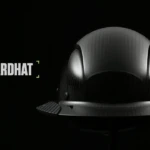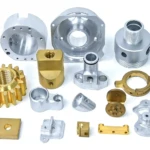Breaking Down the Barriers: Overcoming the Challenges of 3D-Printed Aerospace Components
The aerospace industry is on the cusp of a revolution, driven by the rapid advancements in 3D printing technology. However, this innovation comes with its own set of challenges. In this post, we’ll delve into three crucial hurdles that 3D-printed aerospace components need to overcome, and how these challenges are being addressed by industry experts and regulatory bodies.
Challenge 1: Regulatory Hurdles
The aerospace industry is notorious for its stringent regulations, and 3D printing is no exception. The regulatory landscape is complex, and convincing authorities to accept 3D-printed components as reliable and safe is a significant challenge. According to Michael Shepherd, Vice President of Aerospace and Defense Operations at 3D Systems, the lack of historical data and the rapid development of technology have created uncertainty among regulators. "In traditional manufacturing, there are well-established standards and regulations to ensure quality and performance. However, these standards are still evolving for 3D-printed components, leading to greater uncertainty and longer approval times."
Challenge 2: Testing and Non-Destructive Testing (NDT)
To alleviate the concerns of regulatory bodies, it’s essential to demonstrate the reliability and integrity of 3D-printed components. However, the complex geometries and internal structures of these components pose significant challenges for traditional testing and NDT methods. X-rays, computed tomography, and other non-destructive testing technologies can struggle to detect subtle surface cracks and defects in these intricate parts. Shepherd notes, "The number of concerns for hidden internal defects in 3D-printed components is high. The complex form of these components can be detrimental to the application of these NDT technologies, making it even more challenging to ensure component reliability."
Challenge 3: Material Properties and Behavior
The variety of materials available for additive manufacturing has increased dramatically over the past decade, providing designers with more options for 3D-printed parts. However, the additive manufacturing process can alter the material’s behavior and properties, making it crucial to understand these changes. Shepherd emphasizes, "Even if the materials are mature in the aerospace field, the differences in 3D printing processes can cause changes in microstructure and material properties. For example, the microstructure of Ti-64 alloys printed using laser powder fusion is different from that of Ti-64 alloys produced by traditional forging processes. Consequently, the mechanical properties and failure modes of 3D-printed parts can differ significantly."
Prospects and Future Outlook
While the challenges facing 3D-printed aerospace components are significant, they are not insurmountable. As more space missions utilizing 3D-printed parts are successfully completed, agencies like NASA, the Federal Aviation Administration, and the European Aviation Safety Agency (EASA) will accumulate more data to demonstrate the reliability of these parts. This will lead to reduced regulatory hurdles, as well as guidance for future testing and material development. The additive manufacturing technology is making significant advancements in aerospace applications, and with continued innovation, we can overcome these challenges and unlock the full potential of 3D printing in the aerospace industry.
Conclusion
The three challenges facing 3D-printed aerospace components – regulatory hurdles, testing and NDT, and material properties – are significant obstacles, but not insurmountable. As the industry continues to evolve, these challenges will be gradually overcome, paving the way for widespread adoption of 3D printing in the aerospace sector. With the involvement of regulatory bodies, industry stakeholders, and experts, we can ensure that 3D-printed components meet the stringent requirements of the aerospace industry, ultimately driving innovation and advancing the future of space exploration.
References
Shepherd, M. (n.d.). Additive Manufacturing in Aerospace and Defense. Retrieved from https://www.3dsystems.com/industries/aerospace-defense
National Aeronautics and Space Administration. (n.d.). Additive Manufacturing. Retrieved from https://www.nasa.gov/subject/11608/aerospace-manufacturing
European Aviation Safety Agency. (n.d.). Additive Manufacturing in Aviation. Retrieved from <https://www.easa.europa.eu/ topics/additive-manufacturing-aviation>
















